Apple iPhone 16 Plus Review: Is the Plus model still needed?
We may earn a commission if you make a purchase from the links on this page.

iPhone 16 Plus Intro
For a third consecutive year, we've got an iPhone Plus model. The iPhone 16 Plus is the spiritual successor of the iPhone 15 Plus and the model that resurrected the Plus moniker—the iPhone 14 Plus.
Once upon a time, years and years ago, "Plus" was a hallmark of something added, a sign for addition. Remember the iPhone 6 Plus? Then companies decided that phones should be divided into devices for professionals and phones for… well, amateurs?
Anyway, in the past couple of years, the iPhone Plus was a bridge between the vanilla iPhone and the Pro Max, the top model in the portfolio. It was a non-Pro iPhone but with a huge screen and a big battery.
Once upon a time, years and years ago, "Plus" was a hallmark of something added, a sign for addition. Remember the iPhone 6 Plus? Then companies decided that phones should be divided into devices for professionals and phones for… well, amateurs?
Now, we're at the third iteration of this concept, and it's about time to see if we really need such a device. The Plus models have been the worst sellers from the lineup in the past two years, with 10% and 9%, respectively, for the iPhone 14 Plus and iPhone 15 Plus, so it's time to see whether or not the iPhone 16 Plus is doomed to follow the same path.
Table of Contents:
iPhone 16 Plus Specs
More of the same
Let's start with an overview of the iPhone 16 Plus specs:
| iPhone 16 Plus | |
|---|---|
| Size, weight | 160.9 x 77.8 x 7.8 mm, 203g |
| Screen | 6.7" OLED 60Hz |
| Processor | A18 3nm |
| RAM, Storage | 8/128GB 8/256GB 8/512GB LPDDR5 |
| Cameras | 48MP main 12MP ultra 12MP front |
| Battery | 4,674 mAh |
| Charging | USB-C 26W wired MagSafe |
iPhone 16 Plus Design and Display
Throwback to the iPhone X?
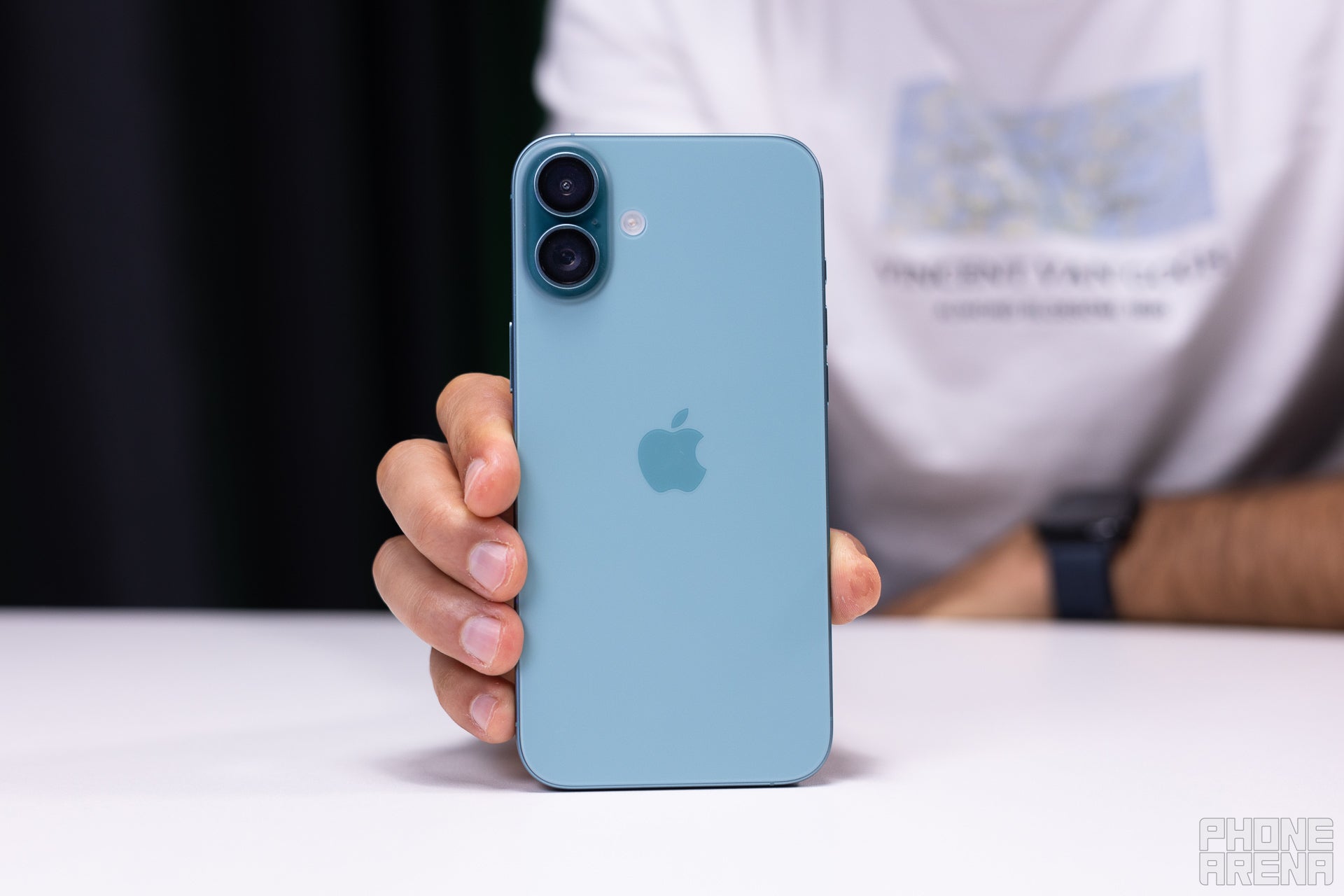
The iPhone 16 Plus has a distinct look thanks to its new camera bump (Image by PhoneArena)
Apple has been reluctant to make big design changes ever since the iPhone 12 series, and the first substantial such change is coming with the iPhone 16 devices, and the non-Pro models, to be precise.
The square-ish camera bump is now gone, and in its place we find a vertical arrangement of the dual camera system, reminiscent of the iPhone X design, but of course with much larger lenses. Other than that, the overall design and feel remain the same, and the formula remains unchanged as well. The iPhone 16 Plus is a glass sandwich made of aluminum frame and tempered glass sheets.
The square-ish camera bump is now gone, and in its place we find a vertical arrangement of the dual camera system, reminiscent of the iPhone X design, but of course with much larger lenses. Other than that, the overall design and feel remain the same, and the formula remains unchanged as well. The iPhone 16 Plus is a glass sandwich made of aluminum frame and tempered glass sheets.
But it's not just tempered glass, it's Ceramic Shield and a new one as well. The iPhone 16 series comes with a 2nd-gen Ceramic Shield, which is 50% tougher than the first generation, whatever that means (we tried to investigate the case here).
However, there's another small nuance that we shouldn't miss. There's a new button on the block, and it will take cameraman duties. The Camera Control button is a capacitive, pressure sensitive button that acts as a dual action shutter button, and you can also use swipe gestures to control different settings inside your camera app, such as zoom or exposure.
The size and weight remain almost the same as what we had last year, it's a big and hefty phone at 200+ grams, but it's expected, and it goes with the big 6.7-inch display.
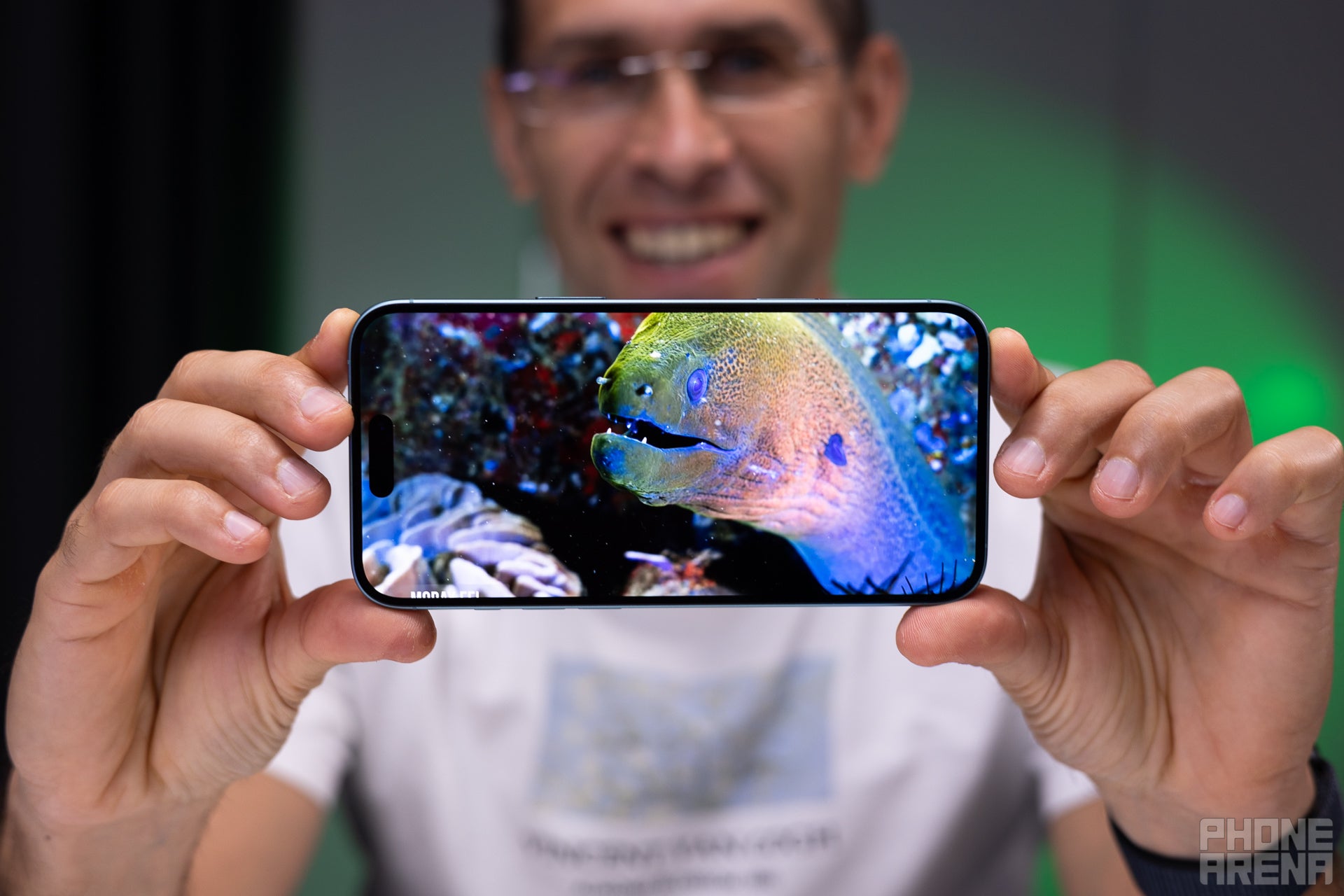
It's still 60Hz folks... (Image by PhoneArena)
Speaking of which, the display of the iPhone 16 Plus is one of the biggest disappointments in the whole lineup. The screen is a 60Hz panel. That's right, even phones such as the Galaxy A55 midranger, or the Pixel 8a, which costs $499, have higher refresh rates. We can't fathom why, but it seems that Apple thinks it can get away with 60Hz for one final time (let's hope it's THE final time). For what it's worth, the brightness is now on par with the figures for the Pro models, up to 2000 nits HDR, and 1 nit minimum brightness.
Further down the display specs sheet we find a very similar panel to the last generation, an OLED panel with 1284 x 2800 pixels resolution and a 20:9 aspect ratio with the familiar Dynamic Island camera cutout in the front.
Display Measurements:
Surprisingly, our display tests showed that the iPhone 16 Plus is on par with the previous model when it comes to maximum brightness, both outputting around 1000 nits. The minmum brightness is indeed 1 nit, but both the Galaxy S24 Plus and the Pixel 9 Pro XL have brighter displays. They also have the benefit of a high refresh rate (both can go up to 120Hz), so despite Apple claims, the screen of the iPhone 16 Plus is not that different from the one we had last year.
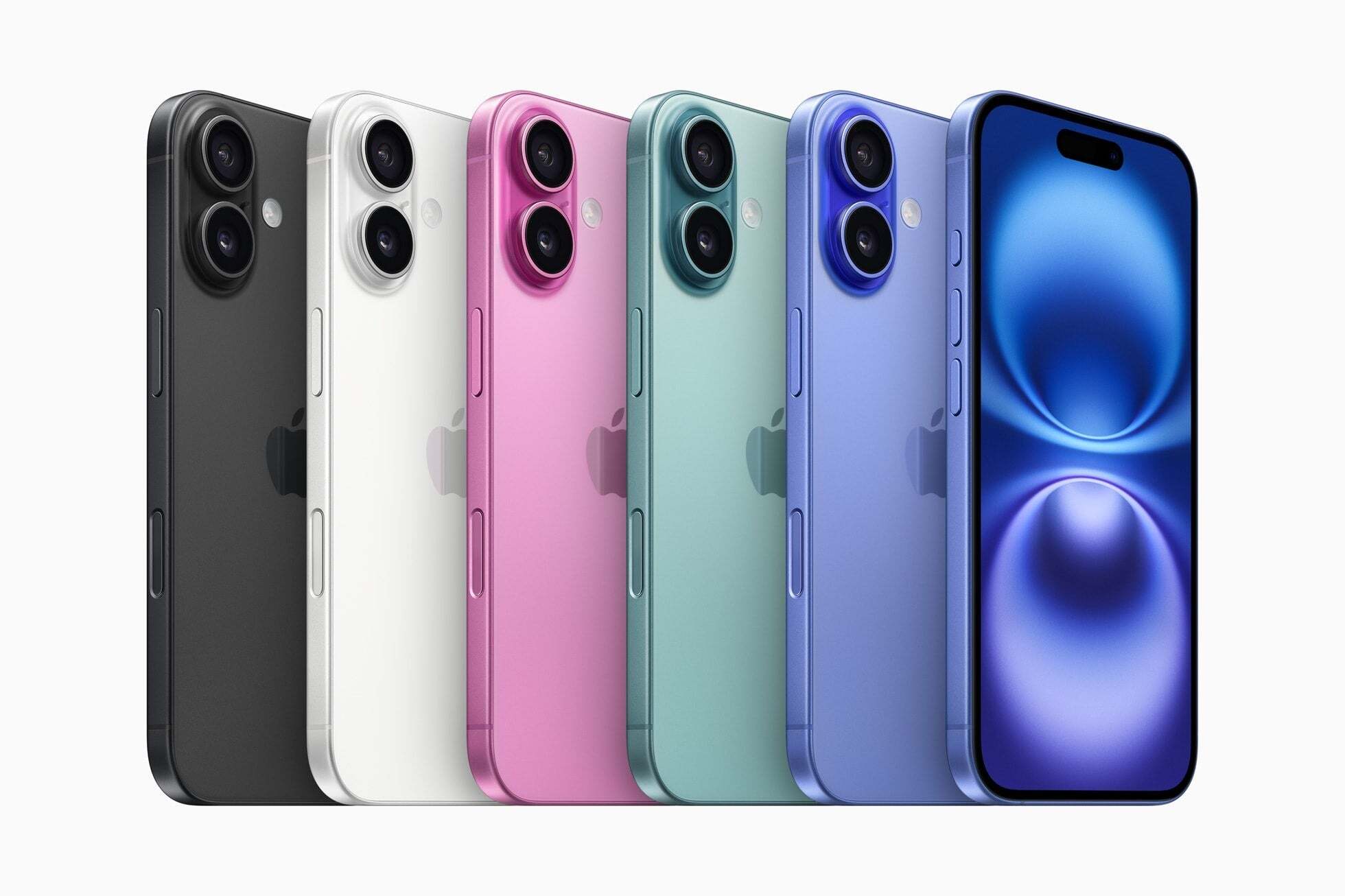
The iPhone 16 colors this year are on the colder side of hues
Finally, let's talk colors. The iPhone 16 Plus colors can be found below:
- Ultramarine
- Teal
- Pink
- White
- Black
iPhone 16 Plus Camera
Copy - paste?
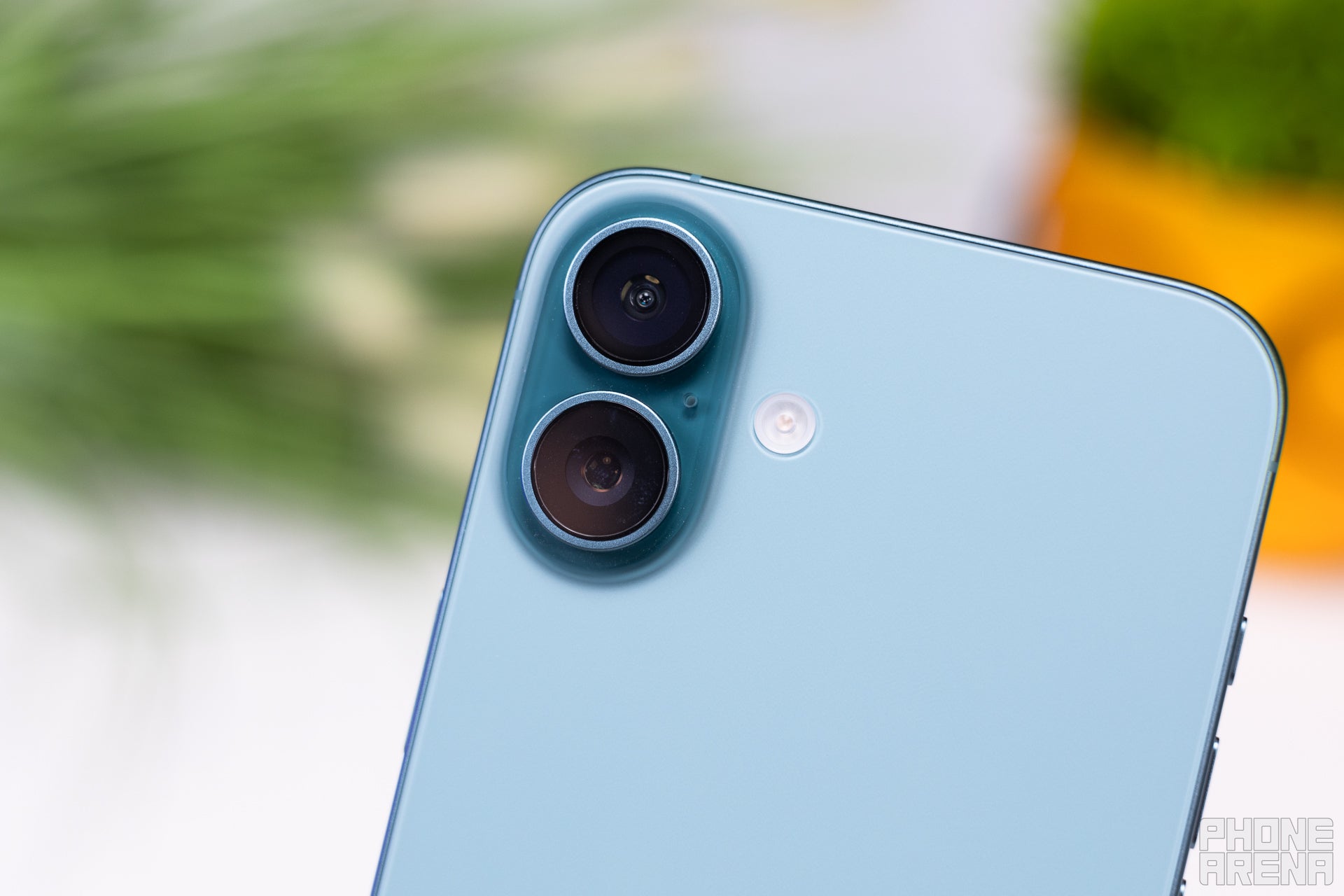
Sadly, the camera hardware is the same as the one on the previous model (Image by PhoneArena)
iPhone 16 Plus camera specs:
- Main — 48MP, f/1.6 aperture, 26mm, AF
- Ultra-wide — 12MP, f/2.2, 12mm, AF, Macro photography
- Selfie — 12MP, f/1.9, AF
The iPhone 16 Plus camera situation is a copy-paste affair, more or less. The iPhone 16 Plus carries over the same camera hardware from its predecessor. The main camera is a 48MP, 1/1.56" sensor under a f/1.6 aperture lens with a focal length of 26mm (wide) and a 1.0µm pixel size.
The ultrawide camera also uses the same 12MP sensor as the previous model, but this time around the aperture is a faster f/2.2, which should help with low-light images. Finally, the selfie camera is also unchanged; it's a 12 MP, f/1.9, 23mm one, located next to the 3D face recognition depth sensor.
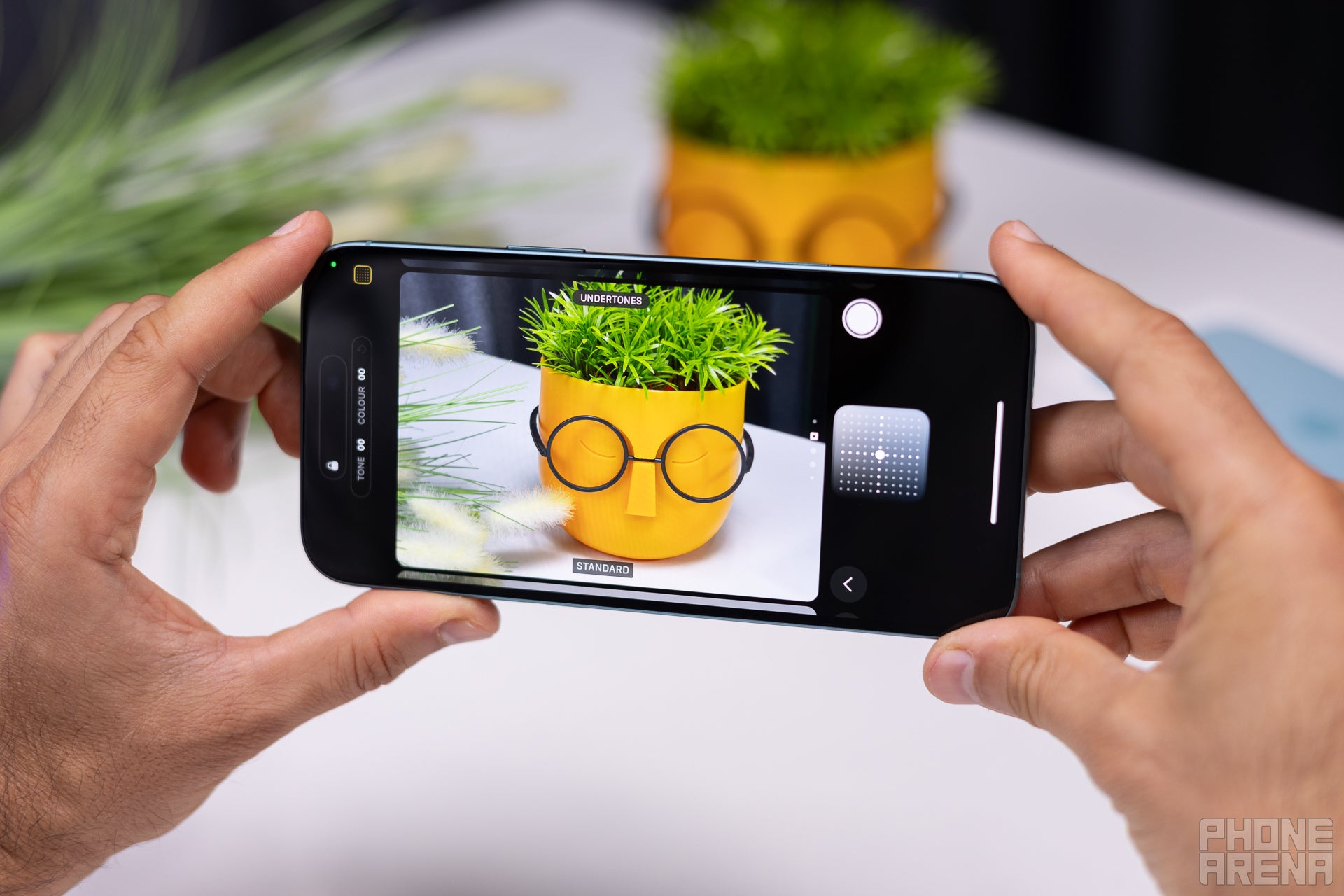
The new Camera Control button is a cool idea (Image by PhoneArena)
There are some new things onboard, though, the most obvious of which is the Camera Control button. Apple made a lot of fuss about this new control, but we felt a bit confused during the presentation. The iPhone was supposed to be simple and easy to use, and now we have a programmable Action button and a capacitive pressure-sensitive shutter button. We don't mind the extra controls, but we don't think people will use this Camera Control for anything else than a shutter button.
Main Camera
The iPhone 16 Plus retains the main camera of its predecessor, but that's not a bad thing. The 48MP sensor resolves a lot of detail, but one thing sticks out, and it's the white balance. This year the images are even warmer. The dynamic range is also decent, although in dusk conditions photos start to look a bit flat.
Thankfully, you can choose different Photographic Styles to tweak the look of your photos to your liking, and this feature works wonders. You can make the colors pop or shift the tonality toward the colder spectrum if needed. Overall, the main camera snaps decent daylight photos, not much different from what the iPhone 15 Plus was capable of.
Thankfully, you can choose different Photographic Styles to tweak the look of your photos to your liking, and this feature works wonders. You can make the colors pop or shift the tonality toward the colder spectrum if needed. Overall, the main camera snaps decent daylight photos, not much different from what the iPhone 15 Plus was capable of.
Low-light conditions are a challenge to any phone out there, but the iPhone 16 Plus manages to output very decent and also believable night samples. You mileage may vary, and in difficult light-and-dark compositions with a lot of pointy light sources, there ought to be imperfections and artifacts, and also dynamic range may suffer. But the end result is pleasing, and what's more, night photos look like night photos. There's no aggressive HDR, sharpening, or overly bright day-like effects.
Zoom Quality
Now, there's no telephoto camera on the iPhone 16 Plus, and you should skip the PR talk Apple tried to push during the "It's Glowtime" event. You can get 2x crops from the main sensor, and these are 12MP non pixel-binned images. This 2x crop mode won't let you get close and personal with cheetahs and other wild life, but it is a nice framing tool, especially for portraits. Higher zoom ranges are digital, and as such, they display the usual artifacts of digital magnification and algorithms in action.
Ultrawide Camera
The ultrawide camera is also the same as the one used in the last generation. Apart from the warmer tones (ones again), there's not much going on in terms of changes in quality. 12MP translate in some loss of detail compared to the main camera, and there's also some focusing issues at the edges of the frame, but that's normal at this field of view. We wish Apple would've slapped the new 48MP ultrawide on the non-Pro models, but then the differentiation would've been even smaller.
Selfies
The selfies are quite good, there's an increase in detail and dynamic range compared to the images taken with the iPhone 15 Plus. There are subtle changes to the skin tone and white balance, resulting in more pleasing samples.
iPhone 16 Plus Performance & Benchmarks
A18 still leads the benchmark race
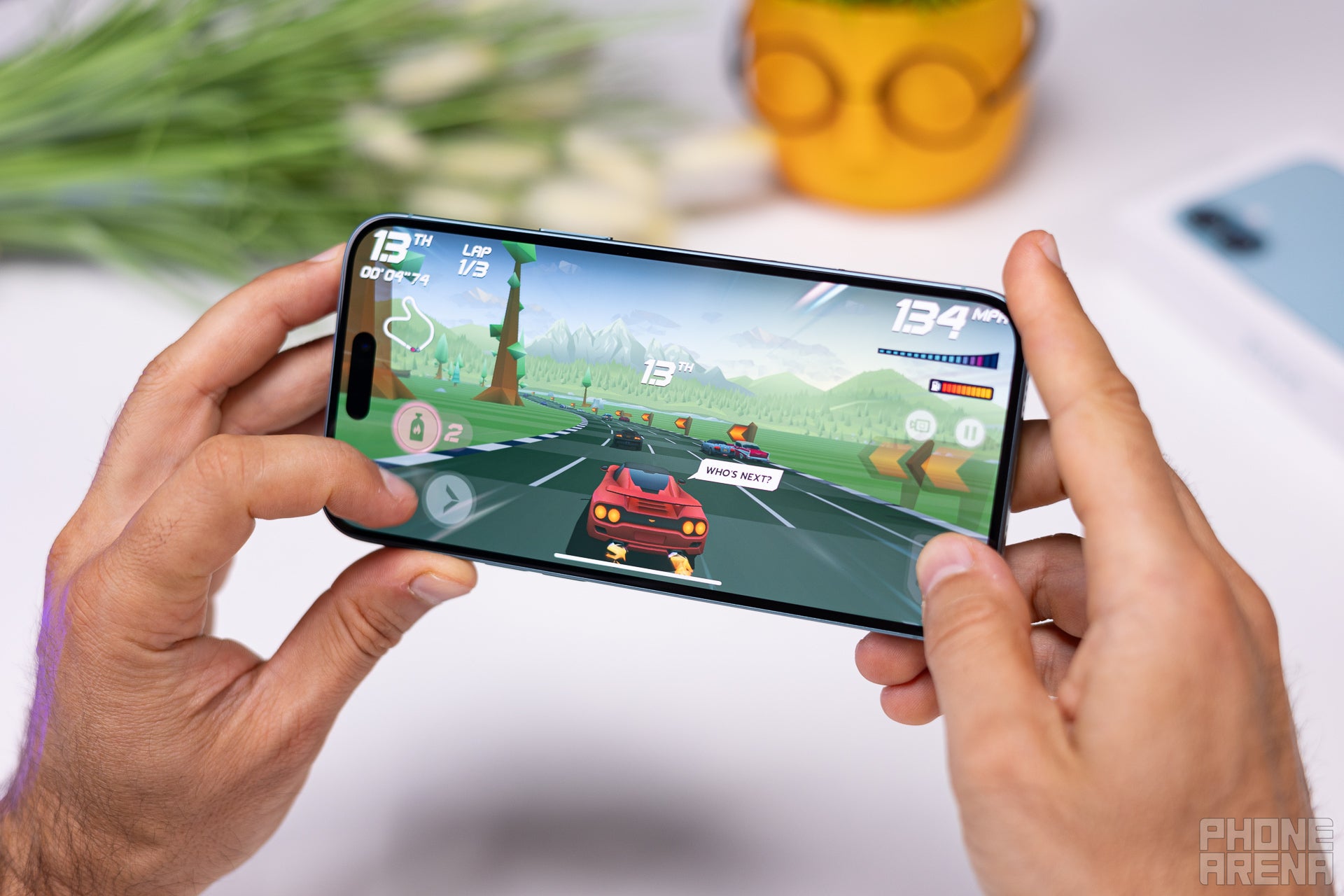
Apple says this chip is 15% faster than the A17 Pro (Image by PhoneArena)
The iPhone 16 Plus uses a brand-new Apple A18 chipset, and even though we haven't run our benchmarks yet, Apple cites 15% improvement in single and multicore performance compared to the A17 and also up to 20% improvement in GPU performance, with 20% less energy used.
Apple also briefly mentioned the 16-core neural engine, optimized for large language models, 2x faster for machine learning and a foundation for Apple Intelligence, and also the 17% more memory bandwidth. The base storage starts at 128GB and goes up to 512GB, and all three configurations use 8GB of RAM.
Apple also briefly mentioned the 16-core neural engine, optimized for large language models, 2x faster for machine learning and a foundation for Apple Intelligence, and also the 17% more memory bandwidth. The base storage starts at 128GB and goes up to 512GB, and all three configurations use 8GB of RAM.
Performance Benchmarks:
The synthetic benchmarks show a substantial increase in performance when we compare the new A18 chip with the old A16 Bionic found inside the iPhone 15 Plus. For what it's worth, the Snapdragon 8 Gen 3 inside the Galaxy S24 Plus gives the Apple silicon a run for its money when it comes to graphics performance.
iPhone 16 Plus Software
Apple Intelligence to the rescue?
The iPhone 16 Plus runs iOS 18, and we already had a glimpse of what that feels like with the last public beta. For more information, you can check out our dedicated iOS 18 review article, but we'll list the major changes here as well.
Apple Intelligence is the big one, and it's Apple's answer to Gemini and Galaxy AI. We will include a full breakdown of its features and a verdict of how useful it actually is, once we finish the review.
There's a Mail Summary feature, which uses machine intelligence to summarize your emails, and a new Call Recording and Summary feature as well. It not only allows you to record a call but also creates a transcript as well as a summary of the call in the Notes app.
The iOS 18 is now very customizable; you can rearrange the apps on the home screen with gaps and also change their colors on the go. Is Apple going down the Android route with this? We have to wait and see.
Here's a quick breakdown of some of the new Apple Intelligence features:
- A much improved Siri that can carry out natural conversations and is generally much more capable in answering your queries and listening to your commands (no more "Here's what I found on the web"
- Contextually aware AI that gives you personalized information via access to your photos, messages, emails, etc.
- A Clean Up tool in the Photos app that allows you to remove unwanted objects
- An image generating app
- Tools to help you correct, write, and alter text in emails and messages
- Genmojis (generative emojis that have the same design as other iOS emojis)
- Enhanced Safari browser that can summarize web pages and remove unwanted elements
- Visual Intelligence via the iPhone's camera: Works like Google Lens, allowing users to search for information about businesses, events, pet breeds, and products (never stores images). It also provides tips and help from ChatGPT if Apple Intelligence can't do it itself.
UPDATE: In December, Apple pushed out iOS 18.2 — the second set of AI feature drops for its iPhones. iOS 18.1 gave us new writing tools, AI notification summaries, and a handy Clean Up feature for Photos. But now, we also got deep ChatGPT integration, where you can query the popular AI from multiple places within apps in iOS. It can generate text or images for you within Notes or through Siri. Visual Intelligence, Image Playground, Genmoji, and Image Wand are also live now — allowing you to scan items for info with the camera, generate comic-like avatars and emoji, and transform your drawings into images with Apple AI. And if you’re waiting for the revamped, smarter Siri, that’ll be dropping with iOS 18.3 in March 2025.
iPhone 16 Plus Battery
More is always good
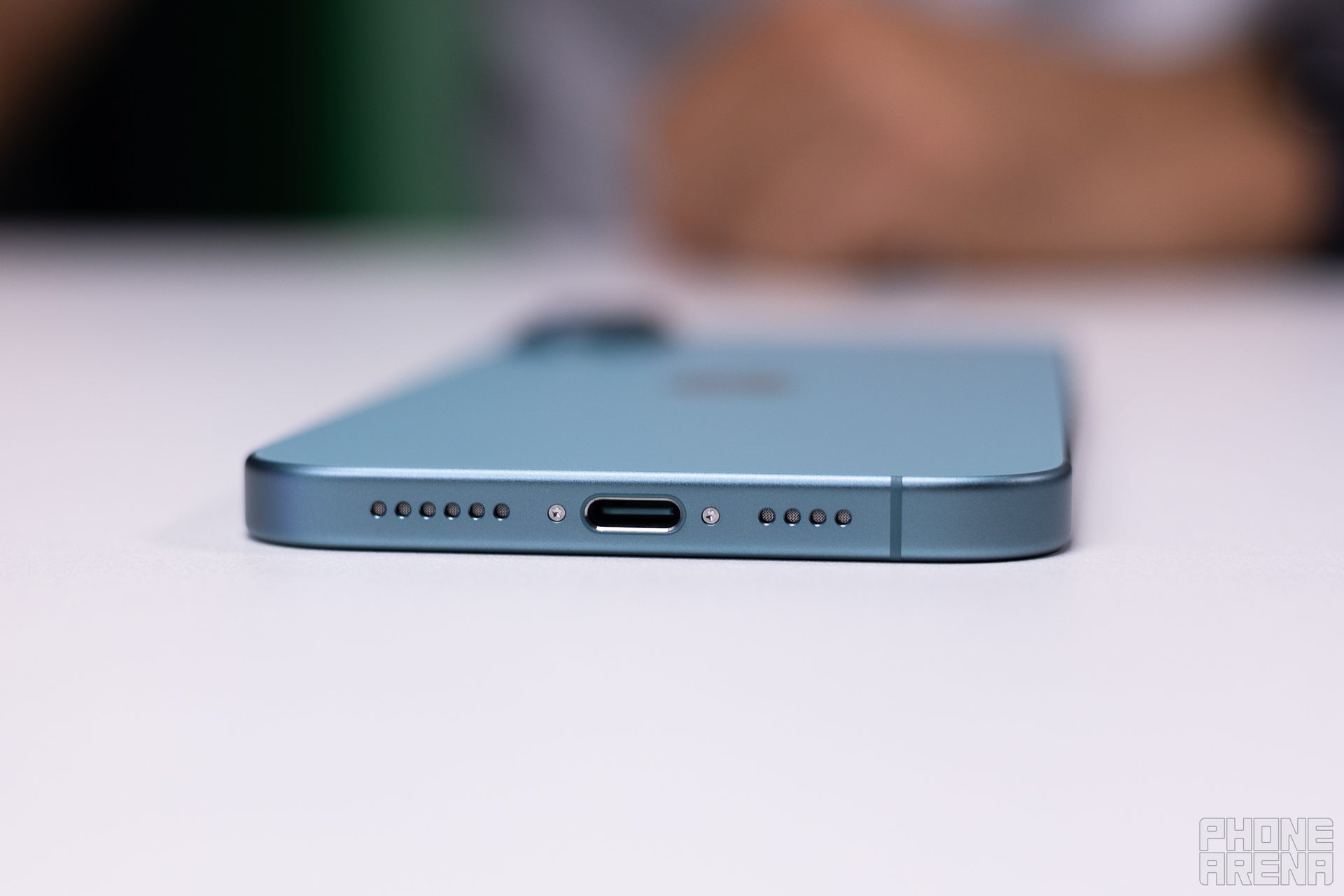
There's a mysterious charging mode lurking inside the iPhone 16 (Image by PhoneArena)
During the Apple “It’s Glowtime” event we caught some talk about the battery being bigger but, as always, we didn't get any numbers. Thankfully, the teardowns showed that indeed, the iPhone 16 Plus has a bigger battery compared to its predecessor, with the exact capacity landing at 4,674 mAh. This is 6.6% more than what we had on the previous model (3,349 mAh) and close to what most of the rivals have nowadays. Time for the benchmarks.
Unsurprisingly, the iPhone 16 Plus managed two more hours of web browsing compared to its predecessor, so the extra capacity manifested itself into battery life. The result is one hour short of what the Pixel 9 Pro XL managed and almost three hours down compared to the Galaxy S24 Plus, which is the web browsing champion here.
When it comes to video streaming, though, the Galaxy phones are notoriously bad, and the S24 Plus lost to both the iPhone 16 Plus and the 15 Plus as well. Strangely enough, the last generation managed to beat the successor, and we don't have an explanation for that.
The gaming went in favor of the Galaxy S24 Plus, and the iPhone 16 Plus was again outperformed by its predecessor, probably due to the new A18 chipset, which, even though more efficient on paper, seems to be drawing more power during gaming.
PhoneArena Charging Test Results:
The charging situation sadly remains on the slower side. Apple didn't mention an upgrade to charging speeds during the event, which means that we're getting the same 26W wired charging. Apple says the iPhone 16 Plus can get up to 50% charge in 35 minutes, and our tests corroborated that.
iPhone 16 Plus Audio Quality and Haptics
The iPhone 16 Plus comes with a pretty decent haptic setup. The Taptic engine has remained unchanged, and that's not a bad thing. The past couple of years, all iPhone models have performed really well in that regard, offering tight, strong, and precise vibration, and the iPhone 16 Plus is no exception.
The audio situation is the same, the dual stereo setup on the iPhone 16 provides good quality audio output with good loudness and not much harmonic distortion. There's no 3.5mm audio jack, just bear this in mind.
The audio situation is the same, the dual stereo setup on the iPhone 16 provides good quality audio output with good loudness and not much harmonic distortion. There's no 3.5mm audio jack, just bear this in mind.
Should you buy it?
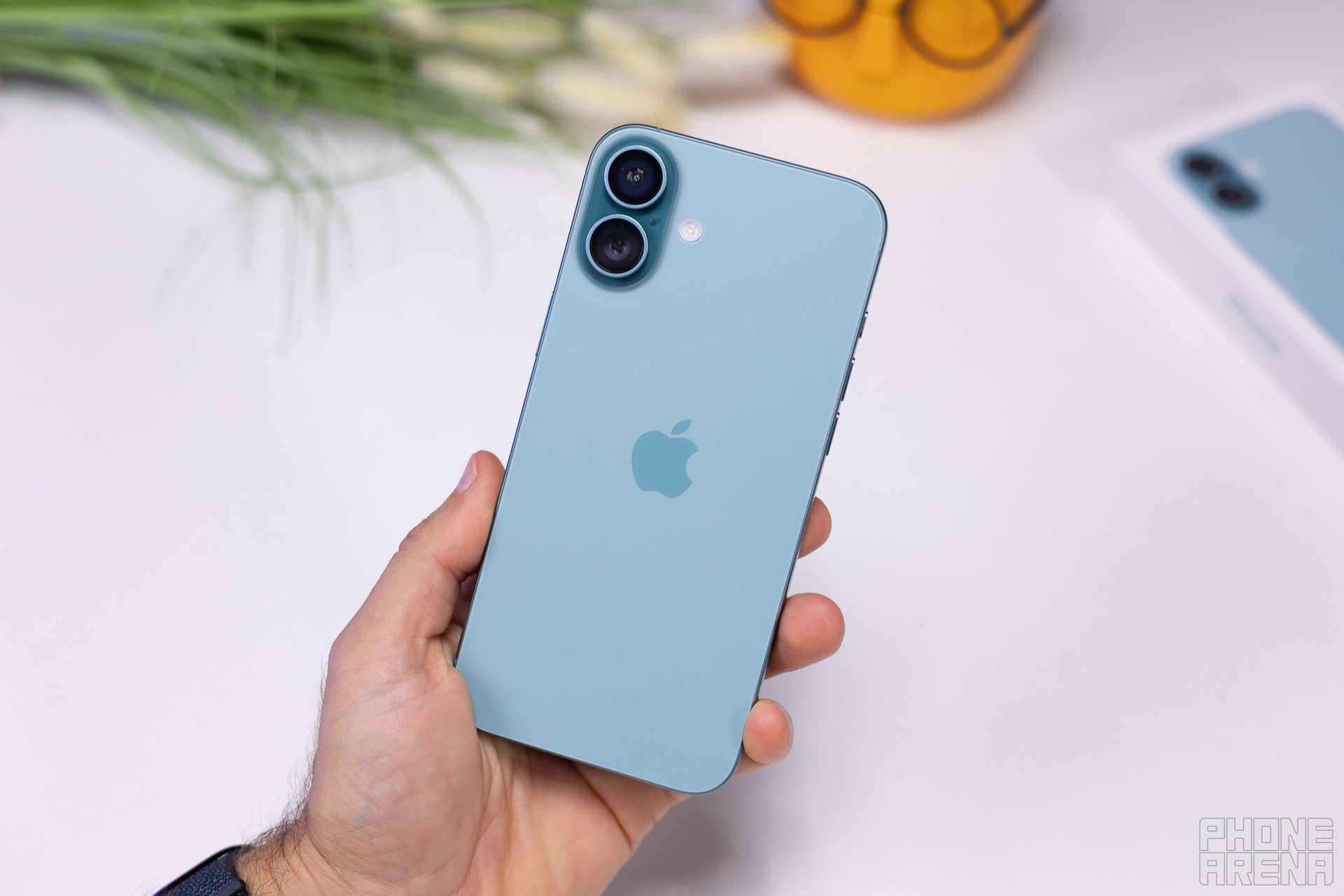
The iPhone 16 Plus is another tough sell for Apple (Image by PhoneArena)
The iPhone 16 Plus starts at $899 for the base 8/128GB model. There's little to no reason to upgrade if you already own an iPhone 15 Plus (or even the iPhone 14 Plus) device. The biggest changes are the Camera Control button and the new A18 chipset, but we don't think these can justify the switch.
Of course, Apple Intelligence is another reason to hop on the iPhone 16 series train, but at the moment its features are still either in beta or coming soon.
Now, if you're coming from an older iPhone device and want to get a taste of all the new AI features, the Camera Control button, and have some power on tap without paying the Pro Max price, the iPhone 16 Plus could be a nice alternative.
The same goes for Android users who are looking to switch; the Plus model could be a gateway to the Apple ecosystem.
That being said, the gap to the Pro devices has grown bigger with these new models, and we're not sure the 6.7-inch screen justifies going for the Plus instead of the vanilla iPhone 16, which is $200 cheaper.
What's even more frustrating for the iPhone 16 Plus is that for $100 extra, you can get the Pro model, which comes with a ProMotion screen, a titanium frame, and one extra camera.
Now, if you're coming from an older iPhone device and want to get a taste of all the new AI features, the Camera Control button, and have some power on tap without paying the Pro Max price, the iPhone 16 Plus could be a nice alternative.
The same goes for Android users who are looking to switch; the Plus model could be a gateway to the Apple ecosystem.
That being said, the gap to the Pro devices has grown bigger with these new models, and we're not sure the 6.7-inch screen justifies going for the Plus instead of the vanilla iPhone 16, which is $200 cheaper.
Follow us on Google News


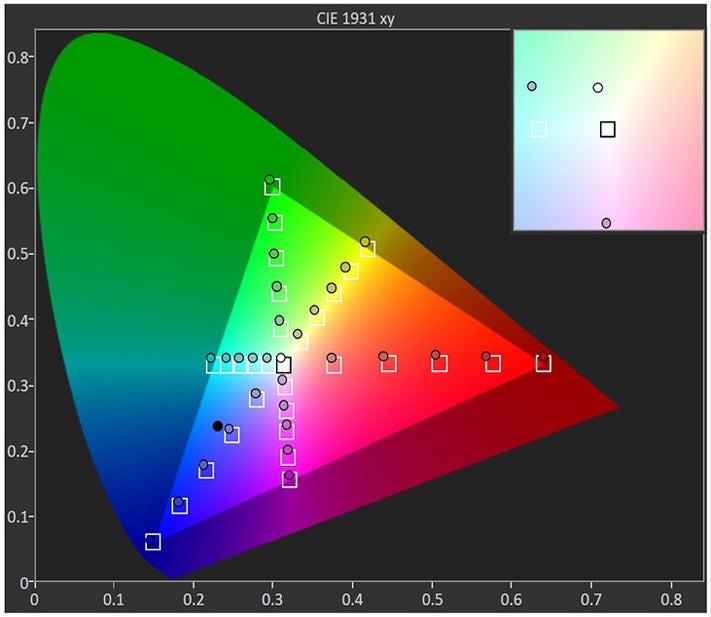


























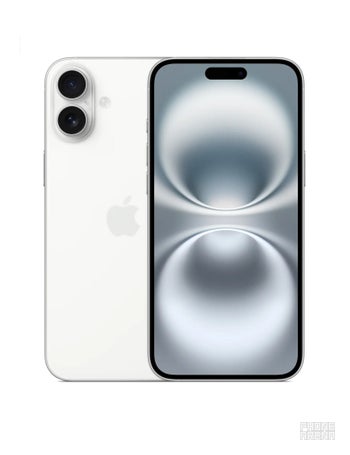






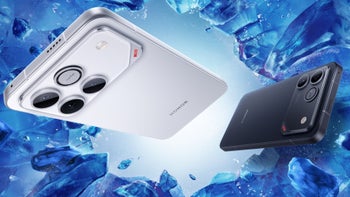





Things that are NOT allowed:
To help keep our community safe and free from spam, we apply temporary limits to newly created accounts: